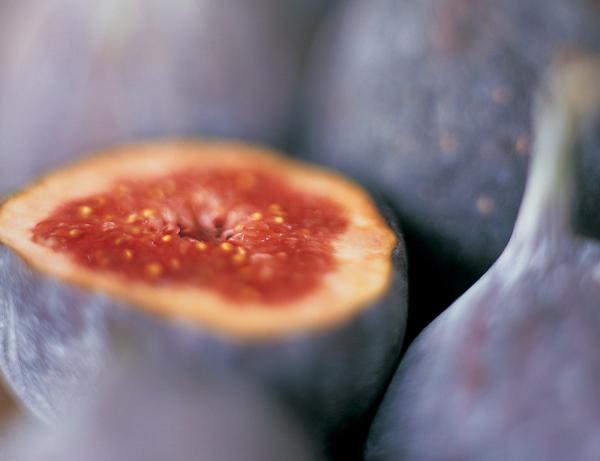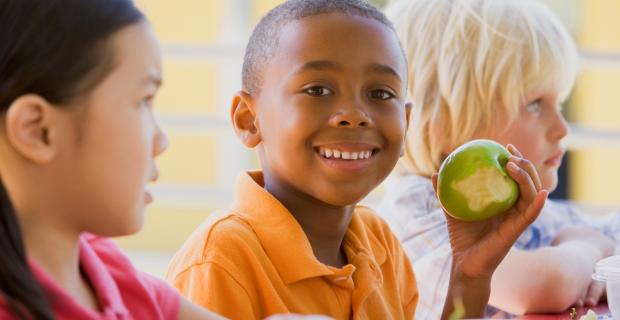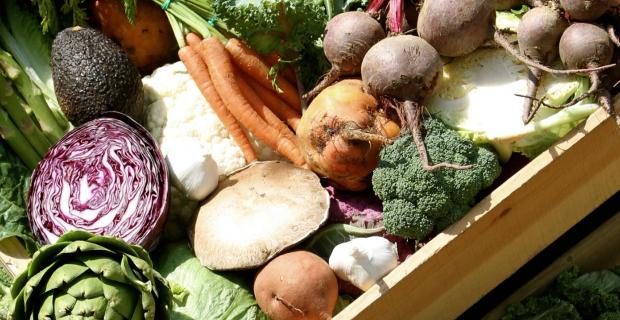Taste

This essay is a keynote address delivered at Taste of Marin, an annual celebration of locally grown foods in Marin County, California, sponsored by Marin Organic.
As humans, we traveled for food for two million years. Columbus, we must remember, traveled across the ocean for taste: spices to be exchanged for gold. Columbus died thinking he had found the western route to India, meaning he didn't know where he was on any of his four voyages. The word Indian is our ongoing testament to his ignorance. Columbus and the Europeans that followed came from a place that had experienced chronic hunger for centuries. They came to an edible landscape farmed by people who by and large did not go hungry. Corn is the largest grain crop by weight grown in the world, and three root vegetables developed in the Americas—potatoes, sweet potatoes, and cassava—are collectively the largest source of calories in the world. When you add coffee, cacao, tomatoes, avocado, peppers, cayenne, chilies, peanuts, cashews, tobacco, sunflower, safflower, vanilla, pineapple, papaya, blueberries, strawberries, passion fruit, pecans, butternut squash, pumpkin, zucchini, maple syrup, cranberry, tapioca (from cassava), and many varieties of beans, it is not difficult to concede that Amerindian farmers were the leading plant breeders in history. Now food travels to us. But from where does it come? The E. coli spinach tragedy in September harmed people all over the country. Why were people getting sick and dying in 20 states after eating spinach from California? Local food is not a mere talisman of safety. If we grew our food like we grew our bodies, then such events could not happen, because we would not try to centralize our food but localize food webs near our homes for nourishment, taste, and security. Taste is a sense, but it is also a common sense. Local food not only addresses quality of life, economy, and food security, it reduces our impact upon global warming, the single greatest threat ever faced by humankind.
Taste is social. We come together, sit and talk together around food; we clink glasses and laugh and engage in small gossips and whispers, all in the presence of wine and tisanes and small cakes with gooseberry preserves and clotted creams or thin wafers bearing full-fatted cheeses daubed with slices of purple figs. It is how we share being alive together. We can engage in the virtual world of iPod music and TV drama but there is no virtual world of taste. It is in our mouths. When we kiss, we taste. The raspberry gets that same intimacy. Tonight was not just a taste; it was an orgy of exchanging precious bodily fluids with sorrels, salmon, and soft cheeses. Every second you chew, your tongue and its 10,000 taste buds evaluate hundreds of millions of molecules—sorting, testing, probing, like a doorman making sure that every bit of food is on the guest list.
Buckminster Fuller once said that Spaceship Earth is so well designed we don't even know we are on a spaceship. Well, our tongue and mouth are so well designed that we don't even know what they do. Our taste changes when we are sick. Our body tells us what we need and don't. Some taste buds are only with us for 24 hours and then disappear. The others are replaced every week or ten days. When you fast for a week, food tastes like you never tasted it before. There are Michael Jordans of the taste world, chefs who are the superstars of flavor; they can take one sip of bouillabaisse and tell you when the mullet was caught, the appellation of the vineyard, whether mandarins or navels were used for the orange zest, the variety of tomato, whether the saffron is from Iran or Azerbaijan, the olive oil was extra-virgin or virgin, and whether the olives were abadejos or allora. Their extraordinary sensibilities pave the culinary highways for future passengers. They write recipes the way poets write verse, and we go to their food theaters to be enthralled.
You would think that after millions of years of eating, we would understand taste by now. Not so. It used to be said there were only four tastes: sour, sweet, salty, and bitter. But a fifth taste was added in the 1990s: umami, a Japanese word meaning savory, meat-like tastes that come from tamari or miso, or from other fermented foods like blue cheese or parmesan. It is the taste of glutamates we get from using kombu or shiitake to make stocks. Not to be outdone, the French say they have found a taste bud for fat. And then the Japanese recently announced a seventh taste, kokumi, a word that cannot really be translated into English. You will just have to imagine this taste. As with language and sound and color, the richer and more complex our vocabulary, the more interesting our life is. Just as language can be reduced to several hundred words and a few grunts, our nutritional literacy can be reduced to a few intense flavors. Salty sweet fat. Yum. It is called McDonald's. Manufacturers know far more than we do about what happens in our mouths, about olfactory responses and mouth feel and how these affect the brain and our sense of well-being. We became culinary hamsters in the gerbil wheel of supermarkets after World War II, going from glistening fat-infested desserts to sugary catsups and salty heart-eroding snacks, exploited by innate appetites and tastes that are there to heal and protect us, not kill. These taste buds in our mouth are not baubles to be toyed with; they are evolution itself, a teacher, a kindness, a guide. They have guided us here tonight. If honored they can heal us, and heal the Earth.
Taste buds under a microscope appear phantasmagorical, creature-like in a Hieronymus Bosch landscape. Some are like clusters of fungiform toadstools; others have appendages like the filiform papillae that look like erect sea anemones waving their frond-like fingers. And there are foliates that are like the canals of Mars running across our palettes. If half a dozen tastes were all we had, we would not be here tonight. We would be bored, eat cat food, and be done with it. It is flavor we seek and it is the nose that creates the mosaics of exquisite experiences we seek with our tongue and mouth. Hold your nose tight and take a sip of wine, and it changes from Cinderella to a crone. When we talk about flavors, there are no longer five or six. There are millions, because none of us smell and taste the same way. We are all different and so is every bite of food, or I should say every bit of natural food. Industrial food is uniform, an unvarying taste over time. Real food is never the same.
Because of a mistranslation of a German paper written in 1901, there is a myth that we taste different flavors on different parts of the tongue. Just isn't true. Each taste bud recognizes every taste. For a hundred years the world accepted a theory of taste that told us we sensed sweets on the tip of our tongue and bitter foods at the back, salty and sour to the left and right, even though no one actually had that experience. It is a free-for-all in there, and that quivering, moist, almost reptilian projectile in your mouth is in fact your closest friend and ally, a direct extension of billions of years of knowledge and learning connected to every cell in your body. It is the way your body detects toxins, the first and most powerful expression of the immune system deciding what can become you and what should not. Me, not me, me, not me, which is how we became the only form of life that can say we are a form of life, the only form of life that is self-aware through consciousness, and the first form of life that can consciously destroy its habitat, or consciously know that there are biological limits to its desires and appetites. Thank you, tongue. As Wendell Berry said at the recent Marin Organic-sponsored benefit for Kentuckians for the Commonwealth, whenever we eat, we make a choice; whenever we choose a food, we either improve the world or make it less, sustain the conditions that are conducive to life or worsen and harm them. In other words, taste does two things: It protects us inside when we are fully aware of what it means, and it can protect and restore the Earth.
The farmers and chefs, the craftsman and gentle makers of the foods we ate this evening are not mere artisans, not simply yeowoman and yeoman horticulturists providing us by their unstinting and vastly underpaid labor with so much pleasure; they are in fact a vanguard of a movement that is reclaiming our land, our place, our culture. How we let our biology end up in the hands of Nestlé's and Unilever and General Foods I will leave to cultural historians, but we now know that if we are to take back ownership and responsibility for our health and the biological integrity of our land, then we have to literally take back our mouths, take back our taste buds from those who would use them to accumulate financial capital and return them to those who create our biological capital, away from people who steal from the future, to those who heal the future, and to offer our trust to those people who, in Adrienne Rich's words, treasure the "enormity of the simplest things." We need to return our taste buds to people who hold a universe of humility and humus in safekeeping for a world that literally has a jaded palette because so much has been lost, a group of people who understand that without our farms, without our exquisite connection to dandelions and thistle honey, huckleberry and heirlooms, to mizuno and miner's lettuce, to our watersheds and soils, that we will live in a world with "no memory, no faithfulness, no purpose for the future, nor honor to the past."
Tastes unfold and are revealed slowly because all taste is released by the interaction of water and molecules, in this case saliva. To be a part of a slow food movement, you must chew…slowly. No gulping allowed. Tonight is not just a taste of Marin, it is a toast to the remarkable people of Marin who day after day reimagine what it means to be human in these most troubling of times, and do it by enticing us back to a world that we have lost, who seduce us like a butterfly to honeysuckle, who offer a succulent moist savory culture that pollinates our desire to live wholly and authentically in this place we call Marin. David James Duncan, the God-loving, fly fishing novelist from Montana, reminds us that we do not need Karl Rove, Pat Robertson, gun-toting religious fundamentalists, or oleaginous free-trade hucksters to save us, but for sure they need us for their salvation—and "us" stands for the crazy-quilt assemblage of humanity that is willing to stand up to the raw, cancerous insults that come from the mouths, guns, checkbooks, and policies of obese corporations and unelected governments and unloved ideologues, because "we" who seek to protect this Earth and all of its denizens are not merely trying to prevent wrongs but actively seek to love this world. Duncan is eloquent on this subject: "When small things are done with love it's not a flawed you or me who does them: it's love. Small things, lovingly done, are always within our reach." And that is tonight's blessing, small things lovingly done, a model for everything we do in our daily life. If our executives, developers, plutocrats, and politicians did things as lovingly as our hosts and providers and growers did tonight—and do everyday—it would be a different world. In this upside-down world, we pay the least to the people who give the most of their lives: nurses, teachers, and farmers. Today, at the very least, we can offer those who care for our land and bodies the most: our utter gratitude, our amazement at the splendor of their gifts to us, and our unvarnished oath that we will take their offerings and multiply them in the world, and never take for granted those people who care for and nurture life on this Earth.
There are 100 trillion cells in your body. Ninety percent of them are not human cells. They are microorganisms, bacteria and fungi, a whole other world. What makes us human is not human. Without them we would cease to exist. When we eat, when our true taste is regained and experienced, when we have good taste, this community of human cells and nonhuman cells guides us home. When we eat, we feed those cells. We cultivate life, just as a farmer cultivates cells and life in the soil. Right now, inside your body, six septillion activities are going on simultaneously—a six with 24 zeroes after it. Can you feel it? It is happening this very moment to everyone here. You can feel it because it is the feeling of being alive. More things will have happened in your body in just one second of your life than there are stars and planets in the universe. Who is in charge? Luckily, no one. We cannot control this miracle. We can only listen, honor, nurture, and tend. The first cells that assembled and metabolized deep in the ocean 40 million centuries ago are in our bodies now, and we are, in Mary Oliver's words, determined, as they were then, to save the only life we can. Life can occur only in a cell, and this quivering, gelatinous sensate mote is the core of everything we cherish, and places us in direct relation to every other form of life. Our primordial connection to all forms of life links us inseparably to our common fate.
That first gene that was created nearly four million millennia ago was the password to every single form of life that exists today, including bellflowers and Black Angus and Batavia lettuce. The roots of the word gene have given us the words genus, generous, kin, kindness, and nature. Life is what Marin Organic and the Marin Agricultural Land Trust cultivate and support. They create the conditions that are conducive to life, on our farms, in our county, at our schools, in our stores, in our bellies. What we have experienced tonight is that connection, the inseparability for which we are so grateful to everyone who has made this possible. Thanks to all of you for creating this evening, for your leadership, for the amazing food, and for supporting us all as we find our way back home again.
© Paul Hawken




